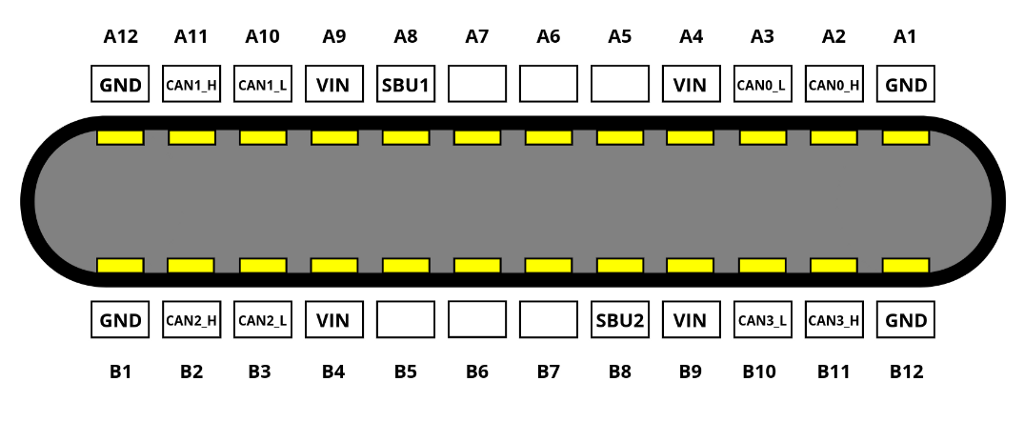DEARBORN, Mich., Jan. 25, 2021 – One of the auto industry’s most influential design leaders will retire from Ford Motor Company this spring and be succeeded by an accomplished global industry veteran. Moray Callum will cap his 38-year product development career – more than half of which was with Ford – as the company’s vice… Continue reading @Ford: Influential Ford Global Design Head Moray Callum to Retire, Will Be Replaced by Anthony Lo, Formerly of Renault
Tag: Mazda
Ford to recall 3 million vehicles for air bags at $610 million cost
By David Shepardson 3 Min Read WASHINGTON (Reuters) – Ford Motor Co said on Thursday it will recall 3 million vehicles for air bag inflators that could rupture, at a cost of $610 million. FILE PHOTO: Ford logo is pictured at the 2019 Frankfurt Motor Show (IAA) in Frankfurt, Germany. REUTERS/Wolfgang Rattay/File Photo/File Photo The… Continue reading Ford to recall 3 million vehicles for air bags at $610 million cost
@Mazda: Mazda informa los resultados de las ventas de diciembre y de todo el año 2020
IRVINE, California, 6 de enero de 2021 /PRNewswire/ — Mazda North American Operations (MNAO) reportó hoy ventas totales en diciembre de 31,308 vehículos, logrando los mejores resultados de cualquier diciembre y un aumento del 18.2 por ciento en comparación con diciembre de 2019. Las ventas totales anuales del 2020 totalizaron 279,076 vehículos vendidos, un aumento del 0.2… Continue reading @Mazda: Mazda informa los resultados de las ventas de diciembre y de todo el año 2020
Mazda informa los resultados de las ventas de diciembre y de todo el año 2020
IRVINE, California, 6 de enero de 2021 /PRNewswire/ — Mazda North American Operations (MNAO) reportó hoy ventas totales en diciembre de 31,308 vehículos, logrando los mejores resultados de cualquier diciembre y un aumento del 18.2 por ciento en comparación con diciembre de 2019. Las ventas totales anuales del 2020 totalizaron 279,076 vehículos vendidos, un aumento del 0.2… Continue reading Mazda informa los resultados de las ventas de diciembre y de todo el año 2020
@Mazda: Mazda Reports December and Full Year 2020 Sales Results
IRVINE, Calif., Jan. 5, 2021 /PRNewswire/ — Mazda North American Operations (MNAO) today reported total December sales of 31,308 vehicles, achieving best-ever December results and an increase of 18.2 percent compared to December 2019. Full year sales in 2020 totaled 279,076 vehicles sold, an increase of 0.2 percent compared to 2019. With 28 selling days in… Continue reading @Mazda: Mazda Reports December and Full Year 2020 Sales Results
Mazda Reports December and Full Year 2020 Sales Results
IRVINE, Calif., Jan. 5, 2021 /PRNewswire/ — Mazda North American Operations (MNAO) today reported total December sales of 31,308 vehicles, achieving best-ever December results and an increase of 18.2 percent compared to December 2019. Full year sales in 2020 totaled 279,076 vehicles sold, an increase of 0.2 percent compared to 2019. With 28 selling days in… Continue reading Mazda Reports December and Full Year 2020 Sales Results
@Mazda: Mazda Production and Sales Results for November 2020
TOKYO, Dec 28, 2020 – (JCN Newswire) – Mazda Motor Corporation’s production and sales results for November 2020 are summarized below. I. Production 1. Domestic Production Mazda’s domestic production volume in November 2020 decreased 3.8% year on year due to decreased production of passenger and commercial vehicles. [Domestic production of key models in November 2020]CX-5:… Continue reading @Mazda: Mazda Production and Sales Results for November 2020
Working with comma: A Guide for Car Companies
After Consumer Reports tested our product, we’ve seen a big uptick in reach outs from car companies. Some have understood us better than others. Our mission is to solve self driving cars while delivering shippable intermediaries, and we are very focused on this mission. By solve self driving cars, we mean develop software that’s capable of… Continue reading Working with comma: A Guide for Car Companies
How the designer of Lucid Motors’ $80,000 Tesla rival transformed a 2015 sketch into the EV of the future
Business Insider spoke with Derek Jenkins, the VP of design at Lucid Motors, about designing the company’s upcoming Air EV. The Air debuted in September. The Air was first sketched out in 2015 and the design team had to figure out what would still look futuristic by the time the car debuted in 2020. Because… Continue reading How the designer of Lucid Motors’ $80,000 Tesla rival transformed a 2015 sketch into the EV of the future
@Mazda: Mazda informa los resultados de las ventas de noviembre
IRVINE, California, 2 de diciembre de 2020 PRNewswire-HISPANIC PR WIRE/ Mazda North American Operations (MNAO) informó hoy que el total de ventas de noviembre fue de 21,752 vehículos, lo que significa una disminución de 10.8 % en comparación con noviembre de 2019. En lo que va del año, el total de ventas fue de 247,768 vehículos, lo que significa… Continue reading @Mazda: Mazda informa los resultados de las ventas de noviembre
